
Valley of Chickahominy
"Valley of the Chickahominy, looking southeast from the vicinity of Mechanicsville, the scene of the…

Officer's Tents
"New Jersey Camp at Arling, Va., designated as Camp Princeton in honor of one of the Revolutionary battle…
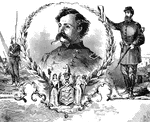
Theodore Runyon
"New Jersey Camp at Arling, Va., designated as Camp Princeton in honor of one of the Revolutionary battle…
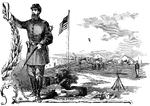
Aid-de-camp
"New Jersey Camp at Arling, Va., designated as Camp Princeton in honor of one of the Revolutionary battle…

Camp Princeton
"New Jersey Camp at Arling, Va., designated as Camp Princeton in honor of one of the Revolutionary battle…

Burning of the White House
"Burning of the White House- the Federal troops, by command of General McClellan, abandoning their position…

Burning of Confederate gunboats
"Burning of the Confederate gunboats, rams, etc., at New Orleans and Algiers, on the approach of the…

Camp Dennison
"Camp Dennison, sixteen miles above Cincinnati, on the banks of the Miami River, General Cox commanding-…

Battle at Potomac
"Engagement between the Federal troops and the Confederates on the Virginia side of the Potomac, opposite…

Engagement at Romney
"Engagement at Romney, VA., twenty miles from New Creek, Tuesday, June 11th, 1861- the Eleventh Indiana…

Fort Norfolk
"Old Fort Norfolk, built by the Federal government, but altered and strengthened by the Confederates."…

Battle of Pea Ridge
"Battle of Pea Ridge, Ark., fought March 6th, 7th and 8th, 1862, between the Federal forces, 13,000…
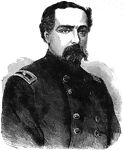
Edward Ferrero
"General Edward Ferrero was born in Granada, Spain, January 18th, 1831. His parents were Italian, and…
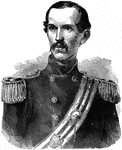
Michael Corcoran
"General Michael Corcoran, born in Carrowkeel, County Sligo, Ireland, September 21st, 1827, died near…
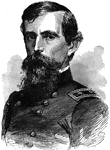
Lewis Wallace
"General Lewis Wallace, born in Brookville, Frankly County, Ind., April 10th, 1827, served in the Mexican…
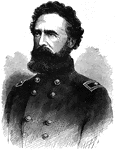
George Sykes
"General George Sykes, born in Dover, Del., October 9th, 1822, died in Brownsville, Texas, February…

Military authorities
"The military authorities at Washington, D. C., examining passes in 1861. This scene was of frequent…
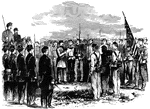
Seventy-ninth Regiment
"Taking away the colors of the Seventy-ninth New York Regiment for insubordination and mutiny, Washington,…
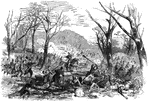
Battle of Mill Spring
"Battle of Mill Spring, on the Cumberland River, near Jamestown, between a confederate force, 8,000…
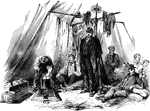
Thirteenth Illinois Volunteers
"Scene in camp life- company mess of the Thirteenth Illinois Volunteers in their camp before Corinth,…

First Minnesota Regiment
"Fort built around the officer's quarters of the First Minnesota Regiment, Colonel Sully, near Fair…

Battle of Charles City
"Battle of Charles City Road- charge of the Jersey Brigade- the first New Jersey brigade, General Tayler,…

Crossing of Shenandoah River
"Colonel Pilson's Battery shelling the rear guard of the Confederate General Jackson's Army, at the…

Stuart's Cavalry
"Stuart's Confederate Cavalry, after their successful raid into Pennsylvania, escaping with their stolen…

Zouaves
"Encampment of Colonel Ellsworth's New York Fire Zuoaves, on the heights opposite the Navy Yard, Washington,…

Howard's Bridge and Mill
"Advance of the Federal troops, near Howard's Bridge and Mill, four miles from Big Bethel, on the road…

View of Grafton
"View of Grafton, West Virginia, occupied by the Federal Troops, under the command of General McClellan,…

Battle at Willis Church
"Battle at Willis Church, Monday, June 30th, 1862- the Federal forces, under General Heintzelman, engaged…

Battle of Gaines's Mill
"Battle of Gaines's Mill, Friday, June 27th, 1862. At eleven o'clock each division, brigade, regiment…
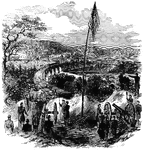
Bouquet Battery
"The Bouquet Battery, commanding the viaduct over the Patapsco River, on the Baltimore and Ohio Railroad,…
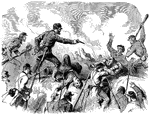
Lieutenant Colonel Morrison
"Heroic conduct of Lieutenant Colonel Morrison, Seventy-Ninth New York Highlanders, on the parapet of…
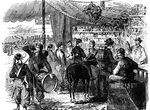
Sutler's Store
"A sutler's store, Harper's Ferry, Va. The sutler's store at Harper's Ferry represents one of those…
Occupation of Norfolk
"Occupation of Norfolk, VA., by the Federal troops- view of the city- Federal vessels at anchor." —Leslie,…
Federal Fleet
"Panoramic view of the Federal fleet passing the forts of the Mississippi, on its way to New Orleans,…
Strasburg
"Reconnoissance of the Confederate poistion at Strasburg, VA., by a detachment of cavalry under General…

Rappahannock Bridge
"Rebuilding of the railroad bridge over the Rappahannock to Fredericksburg, burnt by the Confederates…

Ellsworth's Zouaves
"The departure of Colonel Ellsworth's Zouaves from New york, escorted by the fire department- the regiment…

Edward's Ferry
"Successful retreat of the Federal troops from the Virginia shore across a canal-boat bridge at Edward's…
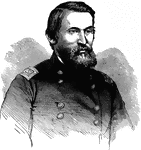
General George Crook
"General Crook, born near Dayton, O., September 8th, 1828, died in Chicago, Ill., March 21st, 1890,…
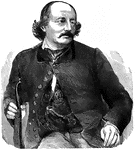
General Benjamin F. Butler
"General Butler was born in Deerfield, N. H., November 6th, 1818. At the time of President Lincoln's…
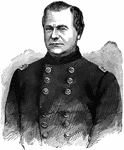
General Richard J. Oglesby
"General Oglesby, born in Oldham County, Ky., July 25th, 1824. Served in the Mexican War; was present…
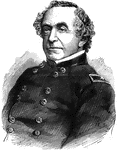
General Joseph G. Totten
"General Totten, born in New Haven, Conn., August 23rd, 1788, died in Washington, D. C., April 23rd,…

Strasburg Woods
"In the Shenandoah Valley- General Fremont's division marching through the woods to attack the Confederates.…
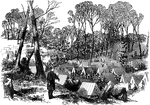
Camp of Ninth Massachusetts
"Camp of the Ninth Massachusetts Regiment in the woods, one mile from the Confederate fortifications,…
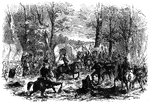
Lick Creek Bottom
"Advance of Federal troops on Corinth- the Carnival of Mud- scene at Lick Creek Bottom, between Pittsburg…

Thirteen-inch Shell Mortar Practice
"Mortar practice- 13-inch shell mortar, as used by the Federal government- weight of mortar 17,000 pounds."…

Mortar Practice - Rear View
"Mortar practice- rear view of 13-inch mortar, with its usual complement of seven gunners. The mortar…

Blue Ridge Pass
"The victory at Blue Ridge Pass, Sunday, September 14th, 1862- infantry charge, and rout of the Confederates.…
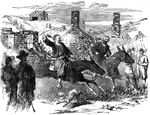
Passage of the Potomac
"A street in Harper's Ferry, VA., during the passage of the Potomac by the Federal troops from Maryland,…

Hilton Head
"Expedition to Port Royal- Government buildings erected on Hilton Head, S. C., by the Federal forces…
!["A detachment of the First South Carolina [African American] Federal Volunteers, under the command of Colonel Beard, repelling the attack of Confederate troops in the vicinity of Doboy River, GA." —Leslie, 1896](https://etc.usf.edu/clipart/11200/11251/doboy_11251_mth.gif)
Doboy River
"A detachment of the First South Carolina [African American] Federal Volunteers, under the command of…
Hilton Head
"Expedition to Port Royal- Government buildings erected on Hilton Head, S. C., by the Federal forces…

Fort Thompson
"View of New Berne, N. C., from the interior of Fort Thompson after its capture by the Federal forces-…

Battle of Secessionville
"Battle of Secessionville, James Island, S. C.- bayonet charge of Federal troops, commanded by General…

Combat at Yazoo River
"Desperate naval combat between the Confederate iron-plated ram Arkansas and the Federal gunboat…

Police Headquarters
"Interior of the outbuilding attached to Marshal Kane's Police Headquarters, Holliday Street, Baltimore-…

Creek Railroad Bridge
"Burning of the gunpowder Creek Railroad Bridge, on the Philadelphia and Baltimore Railroad, by the…

Battle of Savages Station
"Battle of Savages Station. Brigadier General Smith's division hotly engaged with the enemy, at noon,…

Galveston
"Shelling of the batteries at Galveston by the United States war steamer South Carolina, on…

James Island
"Repulse of the Confederates at James Island, near Charleston, S. C., June 10th, 1862, in the attempt…